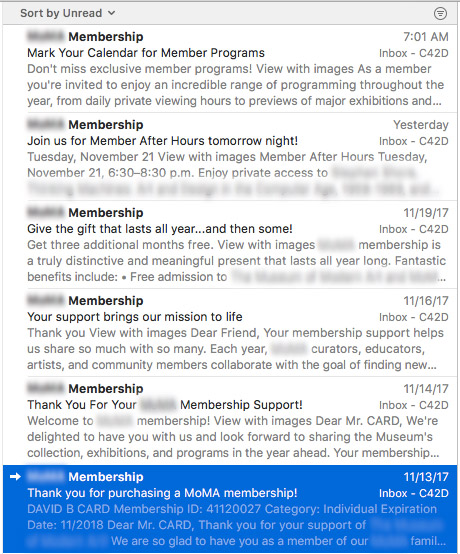This is why email marketing is broken

When I think about the state of B2B email marketing in 2018, something seems broken. We’ve lost the vital human connection. Could relentless push to automate and optimize and A/B test and nurture and pixel and sales funnel ‘users’ to ‘convert’ be having the opposite effect?
At first, it all seems like a good idea. Track users, optimize their journey. Drip feed them just the right content at statistically ideal times. Nurture them with email marketing over the finish line. A whole industry, our industry, is built around this. Follow the tried and true methodology – let the algorithms do the rest.
But, the problem is, people have caught on to the game.
You see, we’re dealing with the most skeptical audiences in history. Decisions about brands are made in nanoseconds. People know when they are being drip-fed now. We feel the sales funnel closing in around us and it creates buying resistance.
As a not-pure-B2B (but nevertheless relevant) example, I recently became a member at a major New York Museum. I usually opt-out of any email campaigns immediately but I figured this was one time where it might be interesting to me to see what’s going on, possibly find some exclusive benefits, or an event I could attend.
So what happened? They squandered my goodwill by bludgeoning me with five emails in the first week. Literally as I am writing this paragraph a sixth email just came in.
Who thought this was a good idea?

And, this is my point. Here you have a prospect, someone who actually wants to read your content, who’s interested, engaged, and feeling good about your brand. Six emails and 168 hours later you’ve lost that prospect, because you are not thinking about the human on the other end of the continuum.
This is where human beings considering the motivations of other people can make a difference. Here’s a breakdown of the five emails:
The obligatory Thank-You / welcome email (does it really have to be obligatory?)
- A second, totally un-necessary Thank-You email
- A third email from the Director of Membership thanking me yet again for supporting their institution.
- A sales email to try and sell me on gifting memberships
- A notification about member after hours – finally something I might actually be interested in.
- A notification to mark my calendar for ‘exclusive member programs’ – potentially valuable, but greatly diminished in value due to the fact that it came less than 24 hours after the last bit of content.
But wait, there’s more. Those were only the emails from Membership Services. I also received (in the same 7 day period):
- A sales email from the gift shop (“top gifts are 20% off”)
- A “personal note” from someone, probably the Museum President, thanking me (for the third time this week) for being a member (for one week), along with “best wishes this holiday season”
What should I do at this point? What would you do? Odds are, they just lost a subscriber, some brand value, and a potential brand advocate. All because their content marketing was asleep at the wheel, and the robots kicked out too many messages in too short a time.
How do you fix this? Apply a few core principles, and a little ‘common sense” thinking.
1. Opt-ins are gold.
You never squander them for any reason, ever. And, the number one sin is too many emails in too short a time. Don’t do it. 1-2 per month is ideal.
2. Test.
How hard would it be to simulate the journey I just travelled? Even a rudimentary simulation would have came to the conclusion that rule #1 was being violated.
3. Stop sending duplicate content.
I was thanked for my membership no less than four times in one week. Great for my ego, not great for the brand.
4. Ask, “does this make sense”? about everything.
Because everything matters. Does it make sense to send the annual thank you letter to people who just signed up 3 days ago? Is it possible to have a more customized system? What if people who have been members for over 5 years got a letter acknowledging that and throwing them a unique benefit? What if my thank-you letter started off with “I know you just joined recently, but boy are we grateful”?
5. Don’t let multiple teams/ units over-post content.
You have to think of everything from your organization as one stream of content. In this example, Membership, Administration, Marketing and the Museum Store all had messages they wanted to get out, and the resulting fire hose did more harm than good. Coordinate your efforts or pay the price.
A recent ad campaign tagline for a sneaker company was “Be More Human” That’s where we need to go for this to work. Applying basic common sense, an ability to think like the person (not the ‘end-user’) on the other end of whatever content we are sending, taking a holistic view of all messages, and customizing content are just a few ways you can do this.
Or, you have the other alternative:
![]()
If this article helped you, please help us by sharing it or recommending to a friend. Thank you!


